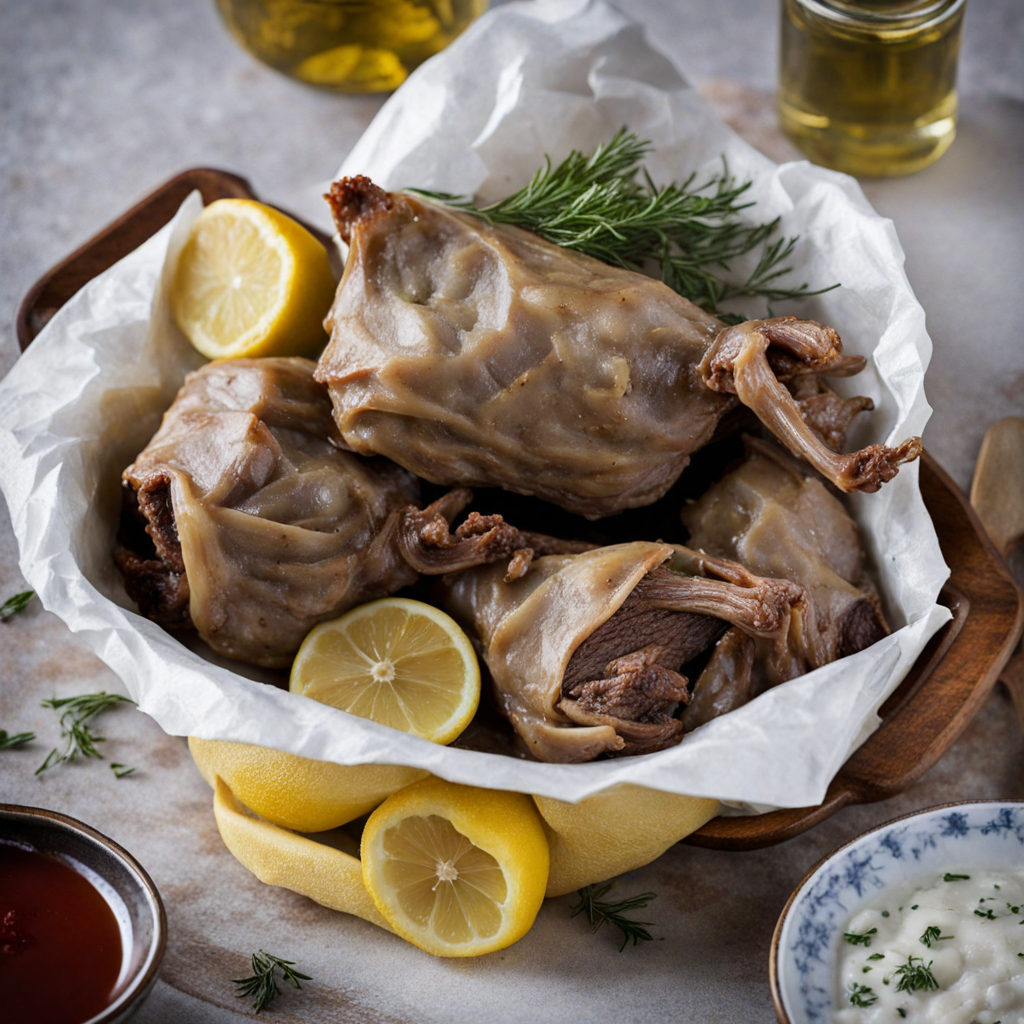Souvlaki
Souvlaki is a beloved Greek dish that epitomizes the vibrant flavors and culinary traditions of Greece. At its core, souvlaki consists of skewered and grilled meat, typically pork, chicken, or lamb, marinated in a delightful blend of olive oil, lemon juice, garlic, and aromatic herbs like oregano and thyme. The meat is grilled to perfection, resulting in a juicy and smoky flavor that tantalizes the taste buds. Served on a skewer or in a pita wrap, souvlaki is often accompanied by fresh vegetables, such as tomatoes, onions, and lettuce, adding a refreshing crunch to each bite. The dish is traditionally served with tzatziki, a creamy sauce made from yogurt, cucumber, garlic, and dill, which adds a tangy and cooling element that beautifully complements the savory grilled meat. The combination of flavors and textures makes souvlaki a delightful experience, as the marinated meat is tender and succulent, while the tzatziki provides a fresh and zesty kick. In addition, the warm pita bread serves as the perfect vessel for wrapping the ingredients together, making it easy to enjoy on the go or at the dining table. Souvlaki is more than just a meal; it represents the communal spirit of Greek dining. Often enjoyed at street vendors or local tavernas, it is a dish that brings people together, whether shared among friends or family. Its simplicity and versatility allow for numerous variations, including vegetarian options made with grilled vegetables or halloumi cheese. With its robust flavors and satisfying quality, souvlaki invites food lovers to discover the essence of Greek cuisine in every delicious bite.
How It Became This Dish
The History of Σουβλάκι: A Culinary Icon of Greece #### Origins and Etymology Σουβλάκι (souvlaki) is a beloved Greek dish that has captured the hearts and appetites of people both within Greece and around the world. The term "souvlaki" derives from the Greek word "σουβλός" (souvlos), which means "skewered" or "spit," referring to the cooking method where meat is grilled on skewers. The history of souvlaki can be traced back to ancient times, although it has evolved significantly over the centuries. The earliest references to skewered meat can be found in Homer's "Iliad," where the Greeks, during the Trojan War, prepared meat on spits over an open flame. Archaeological evidence suggests that the practice of cooking meat on skewers was common in ancient Greek culture. In fact, ancient Greeks enjoyed various forms of grilled meats, often seasoned with herbs and spices, which reflects a culinary tradition that values the simplicity and quality of ingredients. #### Cultural Significance Souvlaki is more than just a dish; it is a cultural symbol of Greece. It embodies the Mediterranean diet, which emphasizes fresh ingredients, communal dining, and the celebration of food. In Greece, meals are often social events, and souvlaki serves as a perfect centerpiece for gatherings, whether it be a casual meal with friends or a festive celebration. Street vendors and tavernas across Greece offer souvlaki, making it an accessible and popular choice for locals and tourists alike. Its versatility allows for a variety of preparations, including pork, chicken, lamb, or beef, marinated in olive oil, lemon juice, and herbs. Traditionally, souvlaki is served with pita bread, fresh vegetables, and a side of tzatziki sauce. This combination not only enhances the flavor but also showcases the Greek emphasis on balanced, wholesome meals. #### Evolution Through Time Medieval and Ottoman Influence The evolution of souvlaki has been influenced by Greece’s rich history of conquests and cultural exchanges. During the Ottoman period (15th century to early 20th century), the culinary practices of the Greeks blended with those of the Ottoman Empire. The introduction of spices and cooking methods from the East enriched the flavors of souvlaki, leading to the use of different marinades and seasonings. Post-Independence Era Following Greece's independence in the early 19th century, a renewed national identity emerged, and food became a significant expression of this identity. Traditional Greek dishes, including souvlaki, were celebrated as symbols of national pride. The dish became a staple in tavernas and was often featured in family gatherings, festivals, and public celebrations. 20th Century and Urbanization The 20th century brought significant changes to Greek society, particularly due to urbanization and increased migration. As people moved to cities, the street food culture began to flourish, and souvlaki became a popular quick meal option for busy urban dwellers. Vendors started selling souvlaki from roadside stalls, making it accessible to a broader audience. This era saw the introduction of new variations, such as the addition of French fries and other toppings, reflecting the dynamic nature of Greek cuisine as it adapted to modern lifestyles. Global Spread The globalization of food in the late 20th and early 21st centuries further propelled the popularity of souvlaki beyond Greece. Greek immigrants brought their culinary traditions to countries like the United States, Canada, Australia, and various parts of Europe. In cities with significant Greek communities, souvlaki became a staple in Greek restaurants and food trucks. Its simple yet delicious flavors appealed to diverse palates, making it a favorite among food lovers of all backgrounds. #### Modern Interpretations Today, souvlaki continues to evolve. Gourmet variations of the dish have emerged, with chefs experimenting with high-quality meats, artisanal pita, and unique sauces. Some restaurants offer vegetarian and vegan versions, using ingredients such as grilled vegetables, halloumi cheese, or plant-based proteins to cater to changing dietary preferences. Moreover, souvlaki has gained a presence in the global culinary scene as a representative of Greek street food. Food festivals and culinary events often feature souvlaki as a must-try dish, showcasing its cultural significance and the rich flavors of Greek cuisine. #### Souvlaki in Contemporary Culture The rise of social media has also played a role in the popularity of souvlaki. Platforms like Instagram and TikTok have allowed food enthusiasts to share their experiences with the dish, from street vendors in Athens to upscale restaurants in New York City. This exposure has contributed to a newfound appreciation for traditional Greek cuisine, with souvlaki often serving as the focal point. In Greece, souvlaki remains a beloved comfort food, enjoyed by people of all ages. It is commonly found at family gatherings, beach outings, and late-night snacks after a night out. The dish's straightforward preparation and ability to bring people together reflect the essence of Greek hospitality. #### Conclusion Souvlaki is a testament to the resilience and adaptability of Greek cuisine. From its ancient origins to its modern interpretations, souvlaki has transcended time and geography, becoming a symbol of Greek culture and identity. As it continues to evolve and thrive in both local and global contexts, souvlaki remains a cherished dish that connects generations and celebrates the joy of sharing good food with loved ones. Whether enjoyed at a roadside stall in Athens or a trendy eatery in New York, souvlaki will always hold a special place in the hearts and palates of food lovers around the world.
You may like
Discover local flavors from Greece







